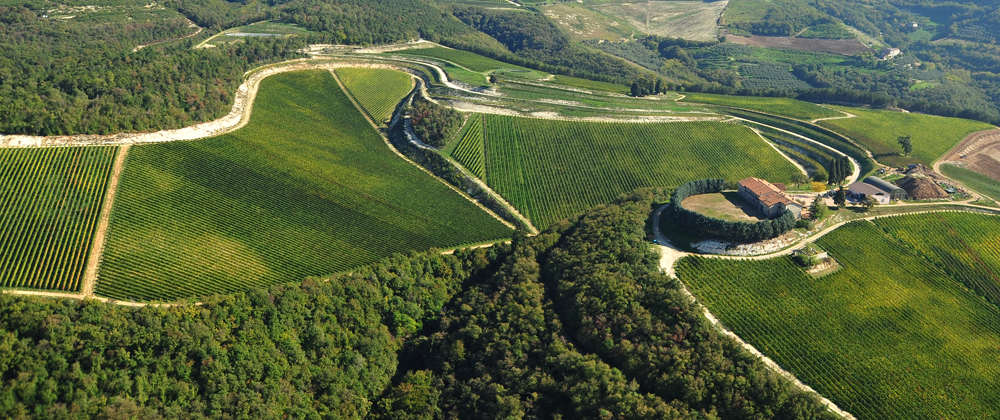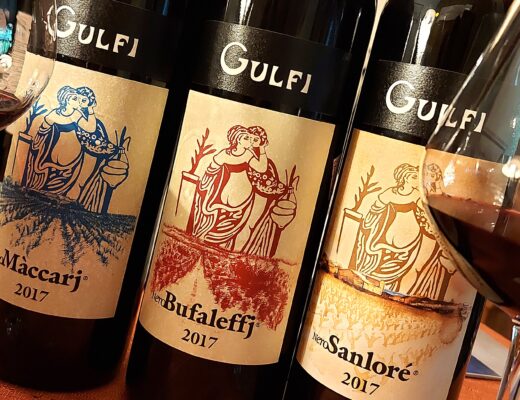Photo credit: Tedeschi Wines
With so much cross over nowadays, in terms of viticultural and winemaking techniques, it is getting harder and harder to find unique wine styles. Burgundian look-a-like Chardonnay is cropping up through-out Australia. German Rieslings are getting drier and more alcoholic, especially in the warmer sub-zones, making them harder to differentiate from Alsace.
To make matters worse (from the point of view of a Masters of Wine student), popular grape varieties – think Syrah or Sauvignon Blanc – are being planted all around the world. Deducing the origin of a wine in a blindtasting scenario has never been so complicated.
So when you (the wine student) are handed a glass of inky, dense, full-bodied red wine, with a heady fragrance of stewed black fruits, figs, kirsch, peonies, and spice, you find yourself smiling. For Amarone is truly a wine apart.
A dense, full-bodied red wine, with a heady fragrance of stewed black fruits, figs, kirsch, peonies, and spice.
Hailing from the Valpolicella region of Northeast Italy, Amarone is a very specific wine style. It is made from the same indigenous grapes as Valpolicella, but from the best vineyard sites featuring mature vines and lower yields. Harvested at optimal ripeness, the grapes are then left to shrivel in warm, ventilated drying lofts for several months. For more information on this special process, called appassimento, click here to read my article “Valpolicella 101”.
Once the grapes are deemed sufficiently raisined, they are lightly crushed and then macerated at cool temperatures for an extended period prior to fermentation. This “cold soak” process allows good colour and aromatic development without excessive tannin extraction. A long, relatively cool fermentation follows bringing the wines to near dryness, with warming alcohol levels, regularly surpassing 15%.
Amarone is a very specific wine style…from the best Valpolicella vineyard sites featuring mature vines and lower yields.
An extended ageing period follows in small barrels or large oak casks whereby tannins mellow, wines harmonize, and aromatic complexity heightens. This is where “tertiary” aromas and flavours like fig, leather, or earthy notes originate.
On a grey, blustery day last month, I pulled the hood of my parka tightly about my face, and trudged through the snow to a very worthy event. The 13 Valpolicella estates that make up the Famiglie Storiche were in town presenting a vertical tasting of Amarone.
This group of prestigious, family-owned wineries share a passion for Amarone as a symbol of the Valpolicella territory. They hold themselves to a higher standard of quality than is required for the appellation.
The aim of the Famiglie Storiche estates is to show the world just how impressive Amarone can be when produced to the highest quality standards.
They believe that the finest, Amarone-worthy vineyards are situated on slopes. These hillside vines receive more direct sunlight, allowing for optimal ripening. Furthermore, these sites have shallow soils that limit vine vigour, lowering grape yields, and thus giving wines of greater concentration and intensity. Grapes are left to ripen to a minimum potential alcohol of 15%. The appassimento period is longer, and the minimum oak ageing duration is 36 months (vs. 24 months required for basic Amarone).
The aim of the Famiglie Storiche estates is to show the world just how impressive Amarone can be when produced to the highest quality standards. The Montréal tasting spanned vintages from 8 to 20 years-old, and ably proved how age-worthy fine Amarone can be.
The stand out wines of the tasting for me were the following. For the ultimate Amarone evening, scroll to the bottom for a great local recipe.
(What do VW, PW and LW mean? Click on my wine scoring system to find out)
Torre d’Orti Amarone della Valpolicella 2010 – 92pts. LW
A modern, opulent style of Amarone with lavish new French oak nuances (cedar, sweet spice), and a dense, yet velvetty texture. Ultra-ripe dark cherry and plum fruit feature on the nose, underscored by notes of dark chocolate. Fresh, full-bodied, and moderately tannic, with well-integrated 15% alcohol. Hints of tobacco linger on the finish.
Where to buy: L’Enoteca di Moreno de Marchi (Québec)
Masi “Costasera” Amarone della Valpolicella Classico 2007 – 94pts. LW
Classico is a term used in many Italian vineyards referring to the historic growing area of a region, from which the vineyards spread outwards. The Classico sub-zone is generally considered the “heart” of the appellation, often consisting of the best vineyard sites.
Masi’s dark, brooding Costasera 2007 is still incredibly youthful, featuring vibrant acidity and a tightly knit palate structure. Elegant, complex aromas of peony, rose, dark fruits, and cocoa delight on the nose. The mid-palate shows great depth of flavour, with meaty, savoury nuances adding interest. The tannins, while polished, are still quite firm. Needs a few more years cellaring to mellow and integrate further.
Where to buy: Authentic Wines & Spirits (national)
Musella Amarone della Valpolicella Riserva 2006 – 94pts. LW
Riserva refers to wines aged longer before bottling. The minimum duration for Riserva status is 4 years (vs. 2 years for basic Amarone).
Intense aromas of licorice, red cherry, blueberry, plum and dried fruit feature on the nose. The palate is highly concentrated, with a velvetty smooth texture, and perfectly balanced acidity. Very firm, grippy tannins frame the finish. This bold, weighty, warming red needs an equally hearty meal to do it justice.
Where to buy: Importation le Pot de Vin (Québec)
Tenuta Sant’Antonio “Campo dei Gigli” Amarone della Valpolicella 2004 – 90pts. LW
Intriguing aromas of prune, licorice, tobacco, and pepper gain in intensity upon aeration. Fresh, and full-bodied, with a moderately concentrated core of sweet dark fruit and savoury hints. Moderately firm, powdery tannins diffuse across the palate, framing the finish nicely. Drinking well now.
Where to buy: Mark Anthony Wines (national)
Tedeschi “Capitel Monte Olmi” Amarone della Valpolicella Classico 2001 – 95pts LW
A massively structured red, with a dense, richly textured palate profile. Brimming with blueberry, cherry, fig, mocha, sweet spice, and tobacco notes, this is an incredibly complex, fragrant wine. The whopping 16% alcohol is seamlessly integrated, as are the firm, ripe tannins. Drinking well now, with the power and depth to hold for several years yet.
Where to buy: La Céleste Levure (Québec), Noble Estates (Ontario)
Speri “Vigneto Monte Sant-Urbano” Amarone della Valpolicella 1998 – 92pts. LW
Dried fruit, herbal notes, roasted nuts, and mineral nuances feature on the nose of this 20-year old beauty. Still very fresh, and firm on the palate, with a layered complexity of prune, leather, and tobacco flavours. Overall, a very harmonious, well integrated red with a powerful, concentrated nature, and lengthy finish. Drink now before freshness fades.
Where to buy: Lifford Wines (Ontario)
Pairing Suggestions
Amarone should be opened several hours before serving, and decanted if possible. I prefer it chilled down a couple of degrees. The alcohol can feel quite hot on the finish if served too warm.
While dining in the Valpolicella region a couple of years ago, I was served the most decadent meal, with a fine Amarone. It was a rich, savoury risotto, made by replacing the majority of broth with Amarone wine. It is absolutely delicious, but remember… a little goes a long way!
Click here for the recipe. Buon appetito!





No Comments